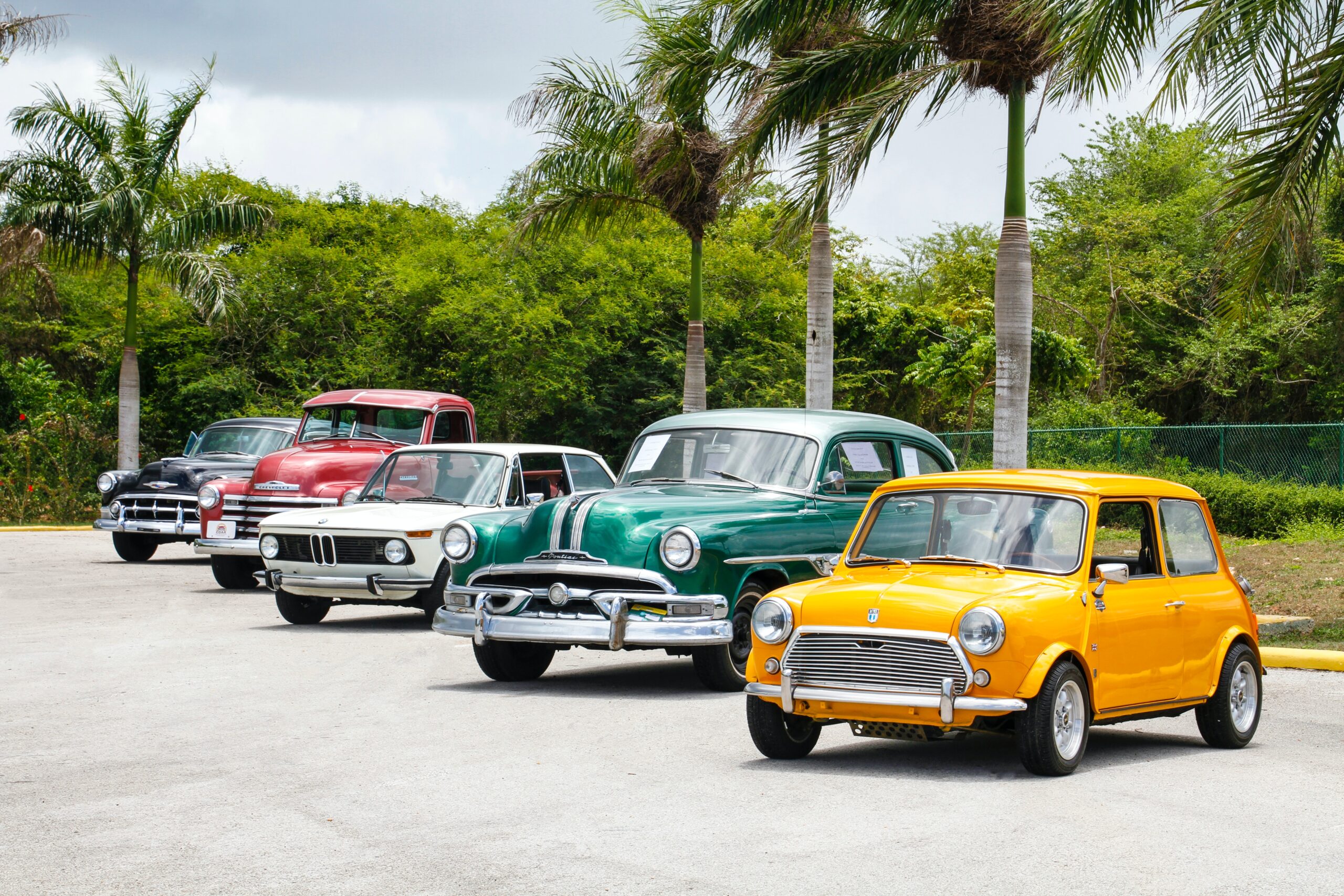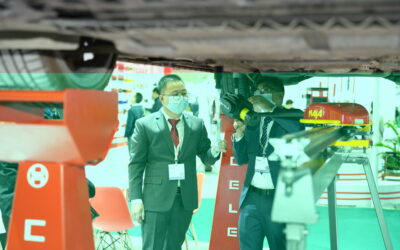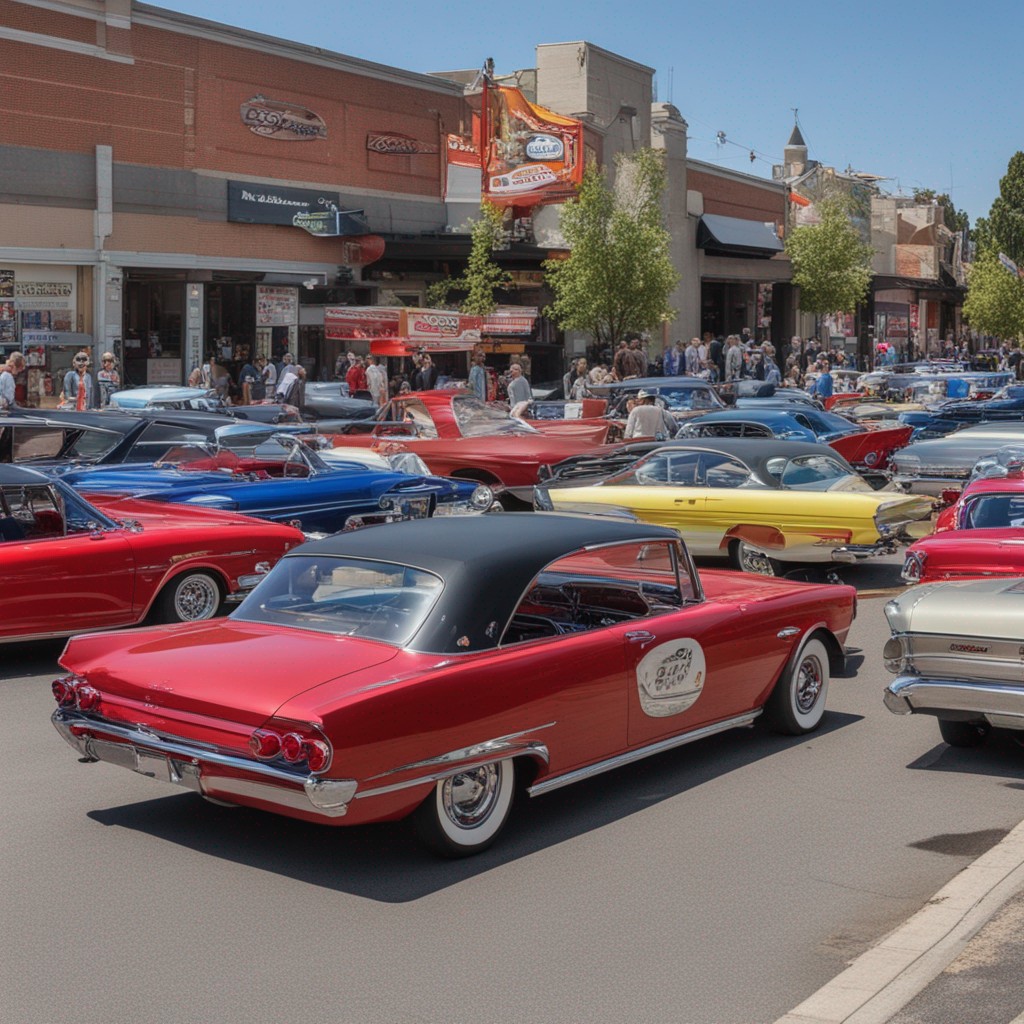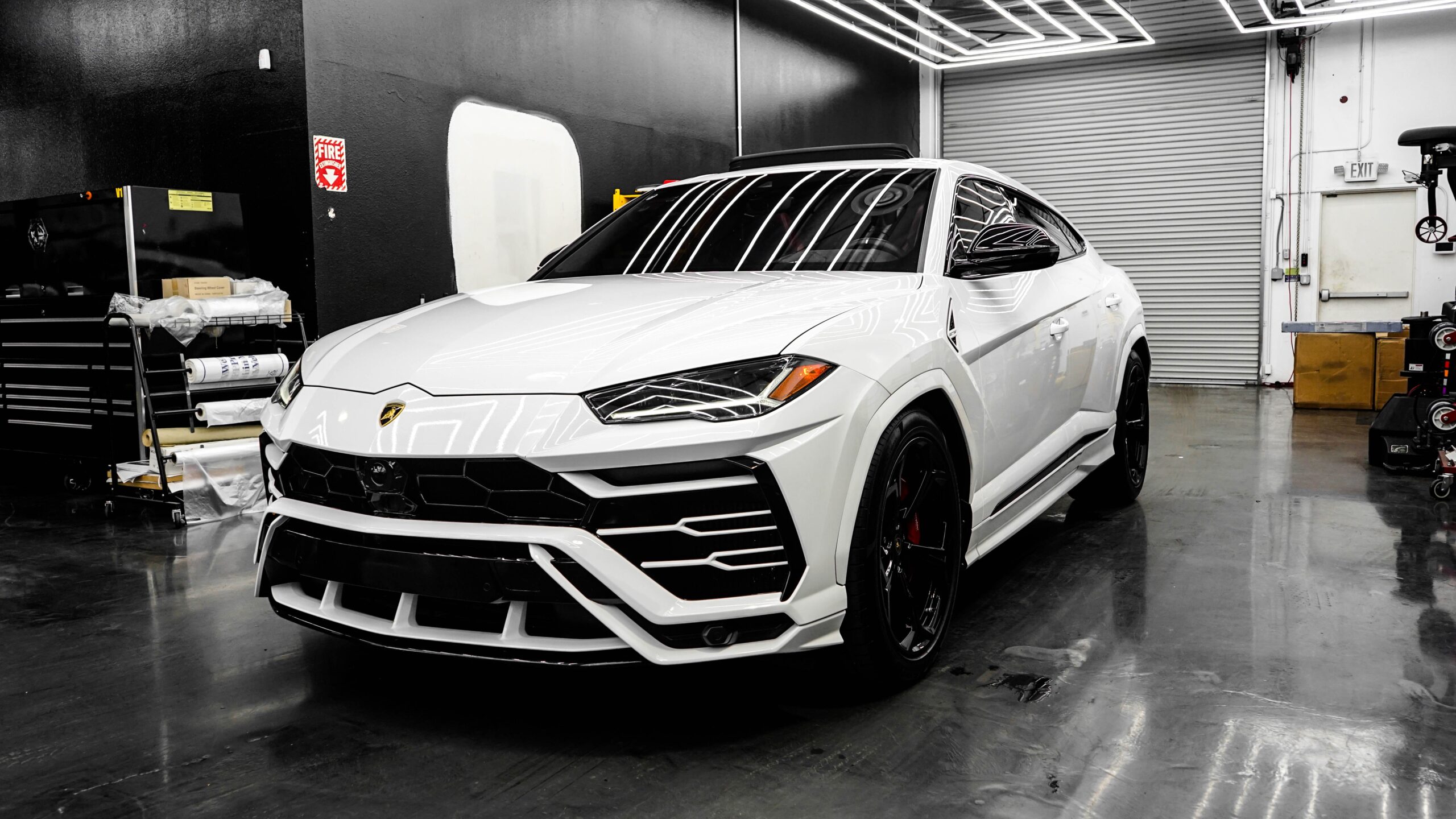Who among us can resist the allure of a well-polished, vintage classic car? And yet, who can turn away from the seductive sleekness of a modern supercar? Each speaks a different language, tells a different tale, and appeals to a unique set of aesthetic sensibilities. We often find ourselves caught between these two poles of automotive beauty, classic and futuristic, and it is precisely this diversity that makes automotive events so enchantingly diverse and enthralling. So buckle up, as we embark on a journey through the fascinating world of diverse car shows, exploring the myriad shades of brilliance on display.
1. The Timeless Appeal of Classic Cars
Classic cars are much more than mere vehicles; they are an intimate glimpse into the past. They tell stories of bygone eras, bringing to life the craftsmanship, style, and culture of the times they were created in. When we attend a car show and see a row of gleaming vintage cars, it’s not just the designs or the engineering feats that captivate us, it’s the sense of nostalgia that they invoke.
To a casual observer, a classic car might just be an old vehicle. But for enthusiasts, it’s a piece of history. Every ding and scratch on the bodywork tells a tale. The worn-out seats are not just leather and fabric; they are pages from a book of memories. The hum of an old engine isn’t just a sound; it’s music that’s been played over and over, echoing through decades.
So, what makes classic cars so appealing? Is it the design? The rarity? The history? Perhaps, it’s a combination of all these factors.
The design of classic cars harkens back to an era where there was an emphasis on aesthetics as well as functionality. Every curve, every line, and every chrome embellishment was a testament to the designer’s vision and a reflection of the design trends of the time. If we take the example of the 1957 Chevrolet Bel Air, its tailfins and chrome detailing are synonymous with the flamboyant designs of the 1950s. Such elements are no longer found in modern cars, making the Bel Air, and other classics like it, unique and appealing to car enthusiasts.
Rarity is another significant factor contributing to the allure of classic cars. Many classic cars were produced in limited numbers or have become scarce over the years due to various reasons, making them rare and highly sought after. For instance, the 1961 Ferrari 250 GT California SWB Spider is one of the most coveted classic cars because only around 55 were ever made, adding an exclusive charm to its already stunning design.
Then, there’s the historical significance. Classic cars are historical artifacts that have survived the passage of time. They are a tangible link to our past, carrying stories of the people who designed them, built them, and drove them. A great example is the Ford Model T, the car that put America on wheels and revolutionized the automotive industry.
Attending a car show featuring classic cars can feel like stepping into a time machine. It gives us a chance to appreciate the artistry, craftsmanship, and engineering genius of the past, fostering an appreciation for the rich tapestry of automotive history. But as much as we adore the classics, we can’t overlook the allure of their modern counterparts – the supercars.
2. The Futuristic Allure of Supercars
From the other end of the automotive spectrum, we have the supercars. These masterpieces of modern engineering are not relics from the past but glimpses into the future. Supercars push the boundaries of what is possible in automotive design and performance. They are the epitome of speed, power, and cutting-edge technology, all packaged in a sleek and seductive exterior.
Unlike classic cars, supercars aren’t about history or nostalgia. They are about innovation and the relentless pursuit of excellence. When you see a supercar, like the Bugatti Veyron or the McLaren P1, at a car show, it’s not just a car you’re looking at, it’s a statement about the future of the automotive industry.
What makes a supercar so alluring? Well, it’s the melding of extremes: extreme performance, extreme design, and extreme technology.
Supercars are, by definition, high-performance machines. They are designed to deliver the utmost in speed and handling. Supercars like the Koenigsegg Jesko Absolut, which can reportedly reach speeds of up to 330 mph, and the Lamborghini Aventador, which can accelerate from 0 to 60 mph in just 2.9 seconds, showcase the stunning performance capabilities of these automobiles.
The design of supercars is equally impressive. These vehicles are designed to grab attention and make a statement. They often feature aerodynamic designs, gull-wing doors, and exotic materials like carbon fiber and titanium. When you see a supercar at an automotive event, it’s impossible not to be impressed by its visual appeal.
Lastly, supercars are on the cutting edge of automotive technology. Many feature advanced technologies such as hybrid powertrains, active aerodynamics, and sophisticated driver assistance systems. The McLaren P1, for instance, uses a hybrid powertrain to deliver astonishing performance while reducing emissions.
So, the allure of supercars lies in their performance, design, and technological advancements. They represent the pinnacle of what the automotive industry can achieve and offer a glimpse into the future of motoring. As we revel in the sleek, futuristic charm of these supercars, we also experience the sheer diversity that car shows offer. But it’s not just about the cars; it’s also about the people.
3. The Enthusiasts: Fueling the Spirit of Diversity
The diversity at automotive events isn’t merely due to the range of cars on display. It’s also because of the motley crew of enthusiasts that these events draw. From dedicated classic car restorers to adrenaline junkies who crave the thrill of supercars, these people make car shows the vibrant and lively events that they are.
Firstly, let’s talk about classic car enthusiasts. These individuals are the caretakers of automotive history, devoting countless hours and resources to preserving and restoring classic cars. They have a deep respect for the craftsmanship and heritage that these vehicles represent, often dedicating themselves to keeping a particular model or brand alive. For these individuals, a car show is both a social gathering and a platform to showcase their painstaking work.
Then there are the supercar enthusiasts. Often, technology lovers, are fascinated by the latest automotive innovations, whether it’s a hyper-efficient electric powertrain or a ground-breaking aerodynamic design. They come to car shows to see the latest and greatest that the automotive industry has to offer and to dream about what the future holds. They may even be lucky enough to take a supercar for a test drive.
What’s truly remarkable about car shows is how they bring these disparate groups together. Underneath the apparent differences, both the classic car lover restoring a 1960s Mustang and the tech enthusiast drooling over the latest Tesla share a common love for automobiles. Car shows are a testament to the universality of this passion, creating a shared space where enthusiasts of all stripes can come together to appreciate the art of the automobile.
But while the enthusiasts and the cars they adore form the heart of car shows, they’re not the only ones contributing to the diversity of these events. The locales themselves add a unique flavor, bringing us to our next point.
4. The Unique Charm of Different Locales
Automotive events take place all around the world, from bustling metropolises to tranquil countryside towns. The location of a car show can have a significant impact on its atmosphere and the kind of vehicles you’ll see there, adding another layer of diversity to these events.
Consider a car show in a city like New York or Tokyo. Given the urban setting, you’re likely to see a good number of supercars and high-end luxury cars. These cities are global hubs for the auto industry, attracting enthusiasts who are eager to show off their sleek, modern machines. The crowd will likely be younger and more technology-focused, reflecting the innovative spirit of these cosmopolitan locales.
On the other hand, consider a car show in a small town or rural area. You might find a more nostalgic atmosphere here, with an abundance of classic cars on display. These shows often attract a different demographic, perhaps older and more interested in the preservation of automotive history. The surroundings, often picturesque and tranquil, provide the perfect backdrop for appreciating the elegance and charm of vintage cars.
Then there are the exotic car shows in locales like Monaco or Dubai, where the uber-wealthy display their opulent collections. These shows are often packed with the rarest and most extravagant cars, from antique Rolls-Royces to limited-edition Bugattis.
Each locale lends a unique flavor to its car shows, reflecting the character and preferences of its inhabitants. Whether it’s the high-energy vibe of a city show, the nostalgic charm of a rural gathering, or the sheer extravagance of an exotic event, the location plays a crucial role in shaping the experience.
But, as we dive deeper into the world of car shows, we realize that it’s not just about looking at beautifully crafted machines. It’s also about witnessing the process that brings these cars to life.
5. Behind the Scenes: Unveiling the Art of Car Making
At a diverse car show, the scope is not only limited to the finished products – the cars themselves. These events often peel back the curtain on the fascinating process of car making. From the sketching of initial designs to the assembly of parts, the production of cars is an art in itself, one that deserves to be celebrated.
For classic cars, this behind-the-scenes look might involve the restoration process. Many classic car enthusiasts spend countless hours restoring old, often dilapidated cars to their former glory. These restorations can be incredibly detailed, involving the replacement or refurbishment of original parts, and in some cases, the fabrication of parts that are no longer available.
A car show might feature a restoration project, allowing attendees to appreciate the time, effort, and skill that goes into reviving these vintage beauties. Witnessing the transformation of a rusted old car into a showpiece can be a rewarding experience for any car lover.
In the realm of supercars, the focus is more on innovation and technology. Car shows often feature exhibits that demonstrate new technologies or design philosophies. For instance, a supercar manufacturer might display a concept car, providing a glimpse into what future models might look like. Or they could showcase a new technology, like an advanced hybrid powertrain, that they’re planning to introduce in their cars.
Behind-the-scenes exhibits provide attendees with a more holistic understanding of the automotive world. They showcase the artistry and technical prowess that go into creating the cars we admire, further enriching the car show experience.
However, these events aren’t just about admiring cars and understanding the craft. They also provide a platform for individuals and groups to express their creativity and passion for automobiles.
6. Platforms for Expression: Custom Cars and Modifications
Automotive events often go beyond just displaying factory-made cars, they also highlight the creativity and ingenuity of car enthusiasts through the showcase of custom cars and modifications. This is another exciting facet of car shows that adds to their diversity and appeal.
For many car lovers, customizing their vehicle is a way to express their personality and make their mark. It’s a form of automotive art that combines technical skill with an aesthetic flair. Whether it’s a classic car with a modern engine swap or a supercar with a unique wrap, modifications allow enthusiasts to put their unique spin on their favorite cars.
At classic car shows, you might see a vintage car with a completely refurbished interior, featuring modern amenities like GPS navigation or advanced sound systems. In the world of supercars, customization could be as subtle as a unique paint job or as dramatic as aerodynamic body kits.
These customizations not only add a personal touch to the cars but also create a whole new level of diversity at car shows. They showcase the creativity and passion of the car community, providing endless inspiration and fueling the spirit of innovation.
But while modifications allow enthusiasts to put their personal stamp on their cars, they also often serve a practical purpose. Many custom cars and modifications are designed to enhance the performance of the vehicle, making it faster, more powerful, or more efficient. This brings us to another thrilling aspect of car shows – the demonstrations.
7. High-Octane Demonstrations: Performance and Precision
A major draw for many automotive event attendees is the thrill of watching high-octane demonstrations and stunts. These may range from classic cars parading around an exhibition hall to supercars sprinting down a track, leaving spectators in awe of their raw power and speed.
For classic car enthusiasts, these demonstrations may involve vehicles showing off their enduring power and agility despite their age. Imagine the excitement of watching a meticulously restored Ford Mustang from the 1960s thundering down a runway, its engine roaring with power. These shows provide a tangible sense of the impressive engineering feats of yesteryears, making the history of automobiles come alive in the most vibrant way possible.
Supercar shows, on the other hand, often focus on showcasing the extreme capabilities of these cutting-edge machines. There’s nothing quite like watching a Bugatti Chiron, one of the fastest cars in the world, unleashing its full power on a straight track. Or a Porsche 911 GT3 demonstrating its precise handling around a challenging circuit. These experiences truly underscore the remarkable advancements in automotive technology.
Moreover, demonstrations aren’t limited to the track. Some events feature off-road trials where SUVs and trucks can show off their ruggedness and ability to navigate tough terrains. This adds another layer of excitement and diversity to these events, ensuring that there’s something for every kind of car enthusiast.
But the fun and thrill at car shows are not only reserved for the spectators. Many events provide interactive experiences that allow attendees to get hands-on with automobiles.
8. Interactive Experiences: More than Just a Spectator Sport
While observing the beauty and prowess of cars is a large part of automotive events, many shows also provide attendees with the opportunity to interact directly with automobiles. This hands-on experience, which ranges from test drives to mechanic workshops, is another aspect that adds to the diversity and allure of car shows.
For instance, some car shows allow attendees to test-drive selected models. Imagine the thrill of sitting behind the wheel of a powerful supercar or a beautifully restored classic and taking it for a spin. These test drives can provide a whole new level of appreciation for the engineering and craftsmanship that goes into making these vehicles.
Moreover, many events offer workshops and tutorials for attendees, giving them a chance to learn more about the mechanics of cars. This could involve simple maintenance tasks, like changing the oil or replacing brake pads, or more complex lessons, like tuning an engine or installing a new suspension system. Such interactive experiences not only educate attendees but also deepen their connection with the automotive world.
In some cases, car shows might host competitions, like a pit stop challenge, where participants have to change the tires of a race car as quickly as possible. These contests can be fun, engaging, and provide an insight into the high-pressure world of motor racing.
By offering these interactive experiences, car shows engage attendees on a more personal level. They are not just about displaying cars; they are about sharing the passion for cars and fostering a sense of community among enthusiasts. Speaking of which, let’s delve deeper into the role of car shows in building community in our next point.
9. Building Community: Uniting People over a Shared Passion
Car shows are not merely exhibitions; they are community gatherings. They serve as a platform for like-minded individuals to connect over their shared passion for automobiles, creating a sense of unity and camaraderie. This is one of the most appealing aspects of automotive events, contributing to their diverse and inclusive atmosphere.
At these events, enthusiasts get the opportunity to meet and interact with people who share their interests. They can discuss their favorite models, exchange tips on restoration or modification, or simply share stories about their automotive experiences. This shared passion for cars transcends age, background, and geography, creating a diverse and vibrant community.
Additionally, these gatherings often support local businesses and charities. Many car shows feature local vendors, giving them an opportunity to showcase their products and services to a wider audience. They might also raise funds for local charities, contributing to the betterment of the community.
Lastly, car shows also create a platform for learning and education. They provide an opportunity for enthusiasts to learn more about the history, engineering, and design of cars, fostering a greater appreciation for the automotive world. Whether you’re an experienced car collector or a casual enthusiast, there’s always something new to learn at a car show.
However, these events aren’t just about the cars and the people who love them. They’re also about celebrating the broader culture that surrounds automobiles, which we’ll explore in our final point. Stay tuned!
10. Celebrating Car Culture: Music, Art, and Fashion
The last, but certainly not the least, aspect that brings diversity to automotive events is the celebration of the broader car culture. This includes the music, art, and fashion that surround the automotive world, which adds a unique flair to these events.
Car shows often feature live music performances, creating a lively and entertaining atmosphere. The genre of music can vary significantly depending on the theme of the event. A classic car show might feature rock ‘n roll or blues, genres that were popular during the heydays of these vintage beauties. Meanwhile, a supercar event might opt for more modern music, like electronic or hip-hop.
Art is another integral part of car culture that is often highlighted at these events. This can include automotive photography and painting, car-themed sculptures, or even graffiti art on cars. Some events might host live art demonstrations, where artists create car-themed works on the spot.
Then, there’s the fashion aspect. From vintage clothing at classic car shows to trendy, modern outfits at supercar events, fashion often plays a significant role in setting the atmosphere at car shows. Some attendees even choose to dress in theme with the type of car they’re showcasing, further adding to the festive and diverse spirit of these events.
In conclusion, car shows are a cornucopia of experiences that celebrate the diverse world of automobiles. From classic cars to supercars, from enthusiasts to locales, and from behind-the-scenes to interactive experiences, these events showcase the multifaceted charm of car culture. They unite people, educate, entertain, and most importantly, they keep the love for automobiles alive and thriving. So, the next time you attend a car show, take a moment to appreciate the diversity that makes these events so special.
We welcome any suggestions or questions. You can email us or contact us using the contact page.
You can also connect with us on the following social networks:









0 Comments